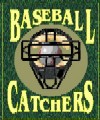Mets fans shook their collective fists in anger yesterday when they learned that
Gary Carter's Hall of Fame induction will be postponed for another year. The outcry continued into the next day with a Mets beat writer referring to those who didn't vote for Carter as the "Clueless 129." Although I am convinced that Carter will eventually receive his due, I am shocked that such fervor was not displayed for another outstanding catcher, Ted Simmons.
Simmons displayed a unique combination of power and average that was vacant from the catching position until Mike Piazza and Ivan Rodriguez arrived. Perhaps his greatest talent was creating a way to reach first. Simmons' on-base percentage (.349) ranks him above Carter (.333), Carlton Fisk (.334), Rodriguez (.341), Johnny Bench (.344) and Yogi Berra (.348). In fact, among all catchers who started their careers after 1945, only Roy Campanella (.360) and Mike Piazza (.392) have a higher on-base percentage.
The high on-base percentage is obviously due to his ability to hit for average. Simmons topped .300 seven times, finishing second in the batting race with a .332 clip in 1975. He was also the model of consistency with his average dropping below .280 only once in the years spanning 1971 to 1980. In contrast, Bench and Carter never logged one .300 season. Fisk only had one full season above .300, batting .315-a mark Simmons passed twice. Berra topped .300 on three separate occasions. However, Berra's best average (.322) was only good enough for a ninth place finish in the offensive-laden 1950 batting race. Ted Simmons finished in the top ten in league average in six distinct seasons during the pitching-rich seventies and eighties. In addition, Simmons' career batting average (285) places him higher than Carter (.262), Bench (.267), or Fisk (.269).
In addition to reaching base, a true hall of famer must excel at driving in runs. This was another area where Simmons topped his peers. Currently, Simmons ranks 56th on the all-time RBI list, knocking in 1389 runs. Fisk is only 71st on the list with 1330 runs batted in. Gary Cater didn't even rank in the top 100 in career RBIs. This statistic is more impressive when you consider that Fisk played more games than Simmons. In terms of individual seasons, Simmons knocked in 100 runs on three separate occasions. Cater accomplished this 4 times, and Fisk only did it twice. Although critics charge that Simmons' power numbers are low, driving in runs and reaching base are the keys to winning ball games. No one can argue Simmons' ability in either category.
The biggest knock on Simmons is that he was a flawed defensive player and spent the majority of his career has a Designated Hitter. Both these statements are simply not true. Simmons bested National League catchers in putouts in 1972 and 1973. He also topped NL catchers in assists during the 1972 and 1978 campaigns. In 1982, he helped the Brewers win the American League Championship by leading AL catchers in fielding percentage. Simmons' durability behind the plate is also not open for debate. In three separate seasons, he led the National League in games caught. He also caught more 75% of his team's games for 8 seasons and caught more than 100 games in 14 of his 16 full seasons. Furthermore, in 1975 Simmons caught 94.8% of the Cardinals' games, placing him sixth on the list of highest percentage of games caught in one season. Currently, Simmons is 9th all time in games caught and spent more time behind the plate than both Bench and Berra.
Baseball writers often use the word "intangibles" to justify voting for a player who maybe a borderline candidate. No one can question the intangibles Simmons brought to the game. His ability to call a game helped earn an ERA title for John Denny, Cy Young awards for Pete Vukovich and Rollie Fingers, and Fingers' 1981 MVP honor. Simmons' arrival in Milwaukee helped an underachieving Brewer team advance to the post-season. Although Simmons' post-season numbers are not spectacular, he hit a critical home run to knock Tommy John out of Game 3 of the 1981 American League Division Series and clubbed two homers against the Cardinals in the 1982 World Series.
In a colossal display of ignorance, the baseball writers failed to give Simmons enough to votes to stay on the ballot. It now falls upon the Veterans Committee to correct this error. Simmons ranks in the top 5 among catchers in 15 categories and in the top 10 in 17 categories. He excelled in reaching base, driving in runs, getting extra base hits, and motivating his teammates to succeed--all while meeting the challenges of switch hitting and playing the most physically demanding position in baseball. All those facts add up to one simple statement: Ted Simmons deserves a plaque in Cooperstown.
» Jeff Mordock is a journalist, screenwriter and avid baseball fan.
Copyright © 2002 by Jeff Mordock. Posted January 19, 2002.


